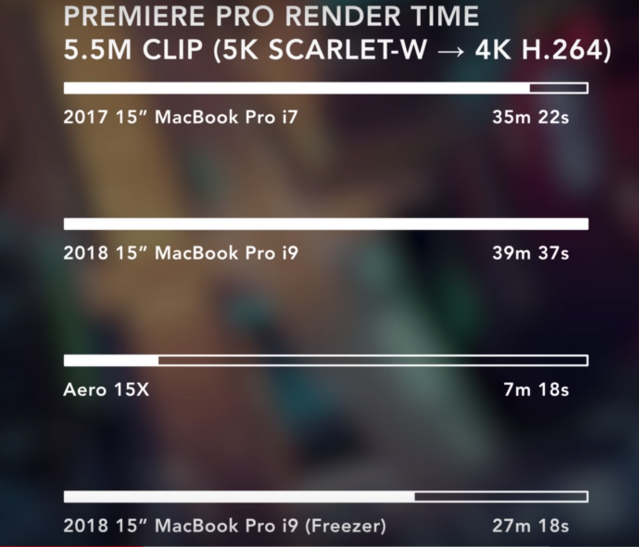All Apple fans were so excited when they heared the news that Apple just launched updated MacBook Pro notebooks. Apple’s new top-end MacBook Pro 15-inch, with the optional Core i9 CPU, is markedly slower than last year’s Core i7 design despite fielding two more CPU cores. That’s the result of empirical tests of the system, which show that under full load, Apple’s redesigned MacBook Pro can’t handle the heat its top-end CPU dissipates. It also means Apple has copied one of the worst habits of the boutique PC laptop industry.
As Extreme Tech reports, the Core i9 processor Apple chose to use inside the MacBook Pro (i9-8950K) has a base clock frequency of 2.9GHz, which is capable of bursting up to 4.8GHz when necessary.
However, testing carried out by YouTuber Dave Lee makes it clear the Core i9 can't even maintain 2.9GHz, let alone 4.8GHz. In fact, it ends up running at 2.2GHz due to the heat generated inside the chassis forcing it to throttle.vHe said " This CPU is an unlocked, overclockable chip but all of that CPU potential is wasted inside this chassis -- or more so the thermal solution that's inside here". Why? Because when it's under 100% full load the cooling system Apple has used is not very good at all, and can't cool the Core i9 well enough for it to not severely throttle, threatening system performance.
You may be thinking, "but it's still a very fast laptop, right?" but that's clearly not the case. The thermal throttling is so severe this Core i9 model ends up taking longer to complete tasks than older generation processors. Lee used Adobe Premier Pro as an example, pitting the Core i9 MacBook against a 2017 MacBook Pro using an older Kaby Lake chip with fewer cores. The older laptop was faster by 11 percent!

The thermal throttling of the Core i9-based MBP is so bad that it performs WORSE than the 2017 model with the Core i7 processor. The new 2018 MBP with the 6C/12T processor inside took 39 minutes to render a video in Adobe Premier Pro, versus the 35 minutes of the previous-gen 2017 MBP with its 4C/8T chip.
The gap between Premiere Pro optimizations on the PC versus the Mac make the comparison against the Gigabyte Aero 15X less accurate than we might wish; the two shouldn’t be directly compared. But the MacBook Pro 2017 quad-core is 11 percent faster than the 2018 system, despite the fact that the Kaby Lake CPU has fewer CPU cores. Lee’s tests show the reason readily enough — the MacBook Pro Core i9 is stuck at 2.2GHz, despite the advertised 2.9GHz minimum clock speed. Drop the system in the freezer, and the render time drops to 27 minutes, 18 seconds. That’s a roughly 31 percent improvement, and it corresponds exactly to the minimum specified clock the 2018 MacBook Pros should be holding in the first place.
AppleInsider notes “it is highly unlikely that the company would ship a flagship product without first rigorously testing its performance.”
This week a teardown of the 13-inch MacBook Pro showed terrible repairability. Macs rarely have decent repairability scores so that is no surprise. We have also learned that Apple has no plans to use the new third-gen butterfly keyboard found in the 2018 MacBook Pro to repair defective older Macs under the keyboard exchange program!


